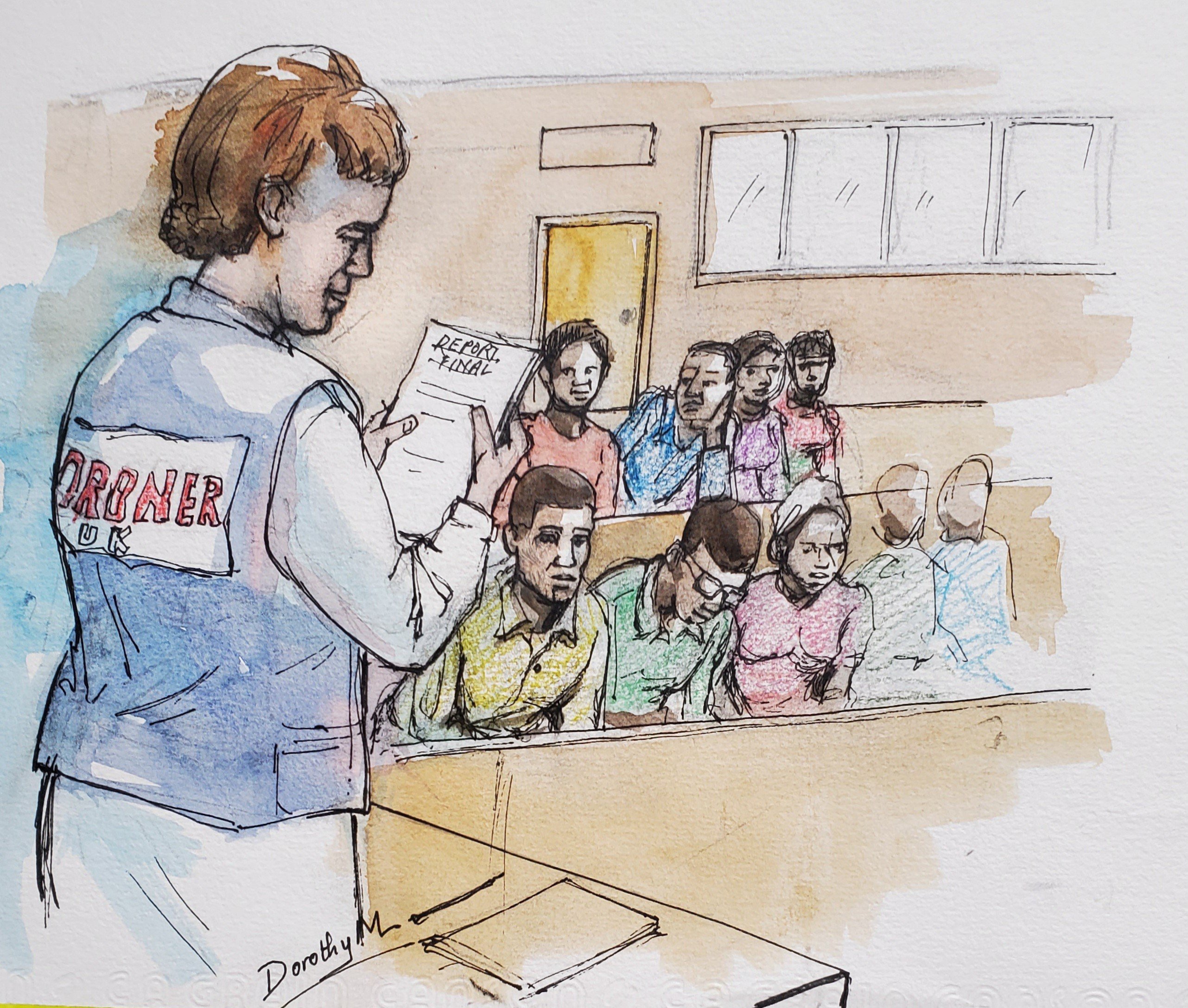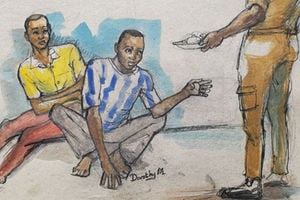
On the 21st day of July 2015, a coroner released his finding of an inquest into the death of an inmate who died in September 2013 in a holding cell in a police outpost within the suburbs of Kampala. The inmate was reported to have committed suicide by hanging himself inside the cell. The inmate, prior to his death, had recorded a statement confessing knowledge of the intricate details the murders of a businessman and his gardener in one of the Divisions of Kampala City in 2012.
The widow of the businessman, a UK based psychiatrist, accused a senior police officer of frustrating investigations into the murder of her husband. The death of the inmate was apparently a last ditch move to destroy evidence of the double murders. The widow was to allege, a few years later, that the senior police officer, another officer and a lady were present at the police outpost the night the inmate was killed.
A pathologist who carried out the initial postmortem examination concluded that the inmate died as a result of suicidal hanging as he, the pathologist, had found a sleeve of a jacket tightly tied around the upper part of the inmate’s neck. Another pathologist, who was directed by court to carry out an independent postmortem examination, however contradicted his colleague and reported that the inmate died prior to his body being hanged to simulate suicide. The pathologist based his conclusion on the postmortem changes as captured in the photographs taken soon after the discovery of the inmate’s body. The postmortem changes were inconsistent with purported position of death. The body had begun to stiffen before being hanged and there was glaring evidence that the body had been moved after death had occurred.
The coroner, with regret found out that the initial post-mortem report made soon after the death of the inmate was not accurate. To the coroner the pathologist who carried out the initial post-mortem examination did so with the one aim of confirming the presumed cause of death as suicide by hanging. The pathologist narrowed down his examination to that one cause and did not explore other possible causes of death. The pathologist, in his report, made mention of the fact that deceased had several injuries on his body at the time the post-mortem examination was conducted. To the coroner it was strange that someone who had died as a result of suicide hanging had several wounds on the body.
On the contrary the coroner found the report of the second pathologist reliable. Although the report did not state the cause of death of the inmate, it was able to point out a number of factors which were consistent with other evidence received in the course of the inquest that ruled out suicide or hanging as the possible cause of death.
The coroner visited the holding cell where the inmate was said to have hanged himself. The coroner also had the opportunity to look at photographs taken by the scene of crime officer after the body of the inmate was had been discovered. To the coroner one of the photographs clearly showed that the body in question was not hanging in the true sense. Save for the fact that there was a sleeve tied around the neck of the deceased and tied on the door, the legs of the deceased, as seen in the photograph, showed the legs of the deceased touching the ground with the left leg in particular bent in a posture where it seems to be supporting the body which is said to have been hanging.
In the same vein when the coroner visited the holding cell where the inmate’s body was found and looked at the door from which he is reported to have hanged himself, he concluded that it was near impossible for someone of the inmate’s height to have hanged himself from that door. The coroner noted that all the witnesses who were present when the inmate was booked in, including police officers and other inmates he was detained with, did not believe that the deceased hanged himself.
Considering all the above the coroner ruled out the fact that the inmate died of suicide or hanged himself. It was the finding of the coroner that the inmate died of unnatural causes and classified his death as a homicide. To the coroner the deceased was probably killed before his body was hanged to disguise the cause of death as a suicide. This could clearly be seen from the manner in which the police who arrested the deceased handled the matter.
The deceased was a suspect in a murder case which was being investigated by one of the main police stations in the city but upon his arrest he was not taken to this station but instead was detained in a holding cell in an obscure police outpost. From the evidence on record, the leadership of the police station under which the police outpost was, was not aware of the inmate’s detention until he was pronounced dead.
From the evidence on record the deceased was even detained in the police outpost without a detention order. The manner in which the police who arrested deceased and those in whose custody he was kept before his death handled the matter, to the coroner, was highly suspicious as it was tainted with a lot of illegality.
In the light of the above, the coroner made the following recommendations;
1) An investigation should be conducted to try and find out who the perpetrators of the death of the inmate were. It was recommended that the persons who were involved in the arrest of the inmate, the police officers involved in detaining him in the outpost and the officers in whose custody he was kept should all be investigated.
2) It was recommended that in future whenever a person dies in the custody of police or any other detention facility, the Inquest’s Act should be strictly adhered to when investigating such a death to rule out the possibility of foul play as was the case in the instant case.
3) It was also recommended that the police leadership ensures that there is close supervision of police posts to ensure that whatever is done in those outposts complies with the requirements of the law. In the instant case the coroner found it strange that a suspect in a murder case being investigated by a prominent police station was kept in custody in a remote outpost without the knowledge of the supervising police station or the investigating police station. With close supervision, the scenario in the instant case would have been avoided.
4) The police leadership should ensure that they strictly adhere to the requirement of preparing and filling situation reports. In the instant case the coroner learnt that each outpost was required to prepare and file them on a daily basis but in the instant case none was prepared and filed for the period the deceased was in detention.
Findings
Considering all the above, the coroner ruled out the fact that the inmate died of suicide or hanged himself. It was the finding of the coroner that the inmate died of unnatural causes and classified his death as a homicide. To the coroner the deceased was probably killed before his body was hanged to disguise the cause of death as a suicide. This could clearly be seen from the manner in which the police who arrested the deceased handled the matter.

